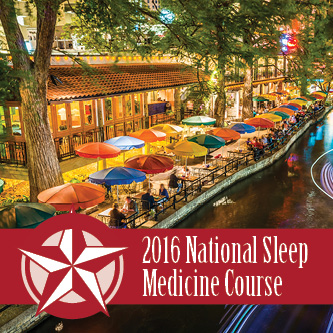-97%
UCSF Neuro and Musculoskeletal Imaging: Exploring the Latest Advancements
The UCSF Neuro and Musculoskeletal Imaging course provides clinicians with a comprehensive overview of cutting-edge neuro and musculoskeletal imaging techniques.
Overview of the Course
This course delves into the fundamentals of neuroradiology and musculoskeletal imaging, with a focus on improving image quality and enhancing diagnostic capabilities. Participants gain insights into the latest CT and MR protocols, as well as innovative MRI techniques, equipping them to refine their differential diagnosis of neuro and musculoskeletal disorders.
Topics and Speakers
Central Nervous System Infections
– Understanding the role of MRI and CT in diagnosing and monitoring infections affecting the brain, spinal cord, and meninges.
Birthmarks and Vascular Anomalies
– Exploring the use of MRI and ultrasound to characterize vascular anomalies and guide treatment decisions.
Neurovascular Case Review
– Case-based discussions showcasing the application of neuroimaging techniques in identifying and managing neurovascular disorders.
Radiculopathy: Beyond the Spine
– Expanding the understanding of radiculopathy beyond its spinal origins, considering musculoskeletal causes and multidisciplinary approaches to diagnosis and management.
Brain Tumor Mimics
– Differentiating true brain tumors from conditions that mimic their appearance on imaging, reducing unnecessary diagnostic workups and enhancing patient care.
Postoperative Spine
– Utilizing advanced imaging techniques to evaluate postoperative spine anatomy, detect complications, and monitor outcomes.
ABC’s of Neck Infection
– Recognizing the key imaging findings indicative of neck infections, facilitating timely diagnosis and appropriate treatment.
Diagnostic Approach to Parotid Masses
– Employing imaging modalities to differentiate benign and malignant parotid masses, guiding clinical management and surgical planning.
Cranial Neuropathies: 1-6
– Delving into the clinical presentations and imaging characteristics of cranial neuropathies affecting nerves 1-6, leading to accurate diagnosis and tailored interventions.
Cranial Neuropathies: 7-12
– Understanding the unique imaging findings and clinical manifestations associated with cranial nerves 7-12, enabling targeted evaluation and management.
HPV-Related Oropharyngeal Cancer
– Recognizing the imaging features of HPV-related oropharyngeal cancer, improving screening and early detection rates.
Differentiating Benign and Malignant Nodes
– Enhancing the ability to distinguish between benign and malignant nodes on imaging, optimizing diagnostic accuracy and patient outcomes.
MRI of Nerve Entrapment Disorders
– Mastering the use of MRI to diagnose and monitor nerve entrapment disorders, offering non-invasive solutions for patients.
MRI of Hip and Pelvis: Tendons
– Utilizing MRI to evaluate hip and pelvic tendons, providing insights into their anatomy, pathology, and treatment options.
Hip: Bone and Joint Disease
– Understanding the imaging characteristics of various bone and joint diseases affecting the hip, enabling accurate diagnosis and appropriate management.
MRI of the Knee: Ligaments
– Assessing knee ligaments using MRI, identifying tears, sprains, and other injuries, guiding treatment decisions and rehabilitation plans.
MR of Muscle Stress Injury of Bone
– Recognizing the imaging features of stress injuries involving bone and muscle, aiding in the early detection and prevention of more severe injuries.
MR of Spinal Trauma
– Exploring the use of MRI in assessing spinal trauma, providing detailed visualization of injuries and aiding in surgical planning.
MRI of Shoulder
– Utilizing MRI to evaluate the shoulder joint, detecting rotator cuff tears, labral injuries, and other common disorders.
MRI of the Elbow: Ligaments and Tendons
– Understanding the imaging findings associated with ligament and tendon injuries in the elbow, facilitating accurate diagnosis and management.
Post Operative ACL Imaging
– Interpreting MRI findings after anterior cruciate ligament (ACL) reconstruction, monitoring healing, and detecting complications.
MRI of the Wrist
– Assessing wrist anatomy and pathology using MRI, identifying injuries and conditions affecting bones, ligaments, tendons, and nerves.
MRI of the Knee: Menisci
– Detecting and characterizing meniscal tears using MRI, guiding surgical decision-making and improving patient outcomes.
Pediatric Epilepsy Imaging
– Utilizing neuroimaging techniques to evaluate pediatric epilepsy, identifying underlying causes and optimizing treatment strategies.
Approach to Metabolic Diseases
– Employing imaging modalities to assess metabolic diseases in children, providing insights into their etiology and facilitating early diagnosis.
Interesting Pediatric Cases: Brain Imaging the Developmentally Delayed Child
– Examining brain imaging findings in developmentally delayed children, uncovering potential underlying causes and guiding further evaluation.
Imaging Concepts of Hydrocephalus
– Understanding the imaging characteristics of hydrocephalus, enabling diagnosis, monitoring, and surgical planning.
Interesting Pediatric Cases: Spine
– Delving into complex pediatric spine cases, exploring imaging findings and discussing multidisciplinary management approaches.
Bone Marrow Imaging
– Assessing bone marrow disorders using MRI, differentiating pathological processes from normal variations.
Systematic Approach to Bone Tumors
– Employing a structured approach to evaluate bone tumors on MRI, enhancing diagnostic accuracy and guiding treatment decisions.
MRI of the Ankle
– Utilizing MRI to assess ankle anatomy and pathology, detecting injuries and conditions affecting ligaments, tendons, bones, and joints.
New Sequences for MSK Imaging
– Exploring novel MRI sequences for musculoskeletal imaging, improving diagnostic capabilities and reducing diagnostic errors.









Reviews
Clear filtersThere are no reviews yet.